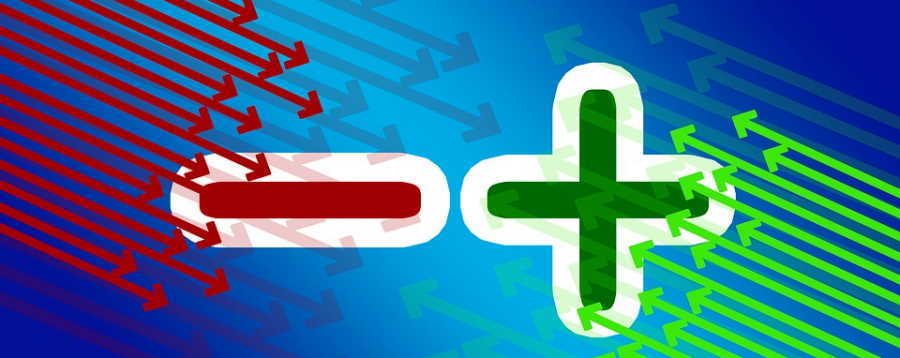Betting Minus Plus
Today, bookmakers offer many types of odds and types of bets, each of which has its designation. In this article, we will answer a popular question, what do plus (+) and minus (-) signs mean in sports betting?
What does +100 or -100 mean in sports betting?
A plus or minus sign and a three-digit number denote the odds in US bookmakers (you can find the rating of the best of them on Meta.reviews).
The value of the odds with a plus sign is the amount of potential net profit that can be obtained from a $100 bet. For example, odds at +125 mean that a $100 bet will generate a net profit of $125. The total profit, in this case, will be $225 ($100 bet + $125 net profit).
The value of the odds with a minus sign is the amount you need to bet to get $100 in net profit. For example, odds at -120 mean that a $120 bet will generate a net profit of $100. In this case, the full payment will be $220 ($120 bets + $100 net profit).
What does +1.5 or -1.5 mean in sports betting?
If $10 is bet at odds of 4, the total returned is $40 ($10 x 4) and the potential profit is $30 ($10 x 4 minus the $10 stake). Fractional Odds. Used mostly in the United Kingdom and Ireland, fractions quote the potential profit should the bet succeed, relative to the stake. The plus (+) and minus (-) in sports betting can refer to either the point spread or betting odds. In terms of the spread, the ' - ' always refers to the favorite and the ' + ' always refers to the underdog. For example, you can bet the Dallas Cowboys as a -7 point favorite to beat the Green Bay Packers or the Packers as a +7 point underdog. Minus means favorite. Plus means underdog. The number you see next to the minus sign is the number you need to BET to win $100. The number you see next to the plus sign is how much you WIN if you bet $100. Let’s look at a quick example: San Diego Padres +145 vs. Pittsburgh Pirates -165. In the above example, you see a money line.
The team with a negative number (like -110) is the favorite. The number next to the minus sign is the amount you must bet to win $100 in profit. If the number is -110, you must bet $110 to win $100. Odds with a Plus Sign (Underdog). The short answer to the question of 'what do the plus and minus signs before the odds number mean' is: a minus sign indicates a favourite to win, while a plus sign indicates an underdog. For instance - let's say that a team is -145 to win a game.
A plus or minus sign and a fractional or whole single or two-digit (for bets on the total in basketball) number usually denotes a handicap bet.
Handicap is a bet on the victory of a particular team with some adjustment. The handicap is added to the final result, and if the final result is in favor of the selected team, the bet wins.
For example, let’s take the soccer match Manchester City – Sunderland. If the player bets H1(-1.5), he will win if Manchester City win the match with a difference of 2 or more goals (2:0, 3:1, 3:0 and so on). The bettor will lose if Manchester City win by just 1 goal or fail to win at all (1-0, 0-0, 1-2, etc.).
Now consider the Real Madrid – Atletico Madrid match. The bet is H2 (+1.5). The bettor will win if Atletico Madrid win or draw or lose by just 1 goal. The bet loses if Real Madrid win with a difference of 2 or more goals.
Plus 100 Betting
The peculiarity of handicap betting is that bookmakers define any sporting competition as a 50/50 contest of equal chances, adding one (usually the underdogs) a point advantage at the expense of the clear favorites of the match. It can be said that in this way bettors’ chances are somewhat equalized, which makes them focus more on luck than on the skill and experience of the sports team.
Types of handicaps

- A handicap can be an integer: (-1), (+1) and so on. With such a bet the player can get a return if, for example, he bet on -1 for the first team, and it wins with a difference of only one goal.
- A handicap can be fractional: (-1.5), (-2.5), (+1.5), (+2.5) and so on. In this case, a return is possible only if the match is canceled.
- Positive handicaps are usually given to a clear underdog. In case a player bet on the victory of an underdog with a handicap (+2.5), and the match ended with a minimal victory of the favorite, it can be said that the bet won.
- Negative handicap, respectively, is set to the favorite. So, if a capper made a bet with a negative handicap (-1.5), and the match ended with a landslide victory of the favorite, the bet wins.
- The essence of the zero handicap is that the player will win if the team on which he bet wins, and get a refund if the match ends in a draw.
Story by Julia Gahan

Related
Point spread betting is the most popular form of sports betting. The vast majority of sports wagers use a point spread thanks to the popularity of football and basketball. Even though this type of betting is so popular, it may take awhile to understand.
The point spread is sometimes known as an equalizer for sportsbook operators. All teams aren’t created equally, so sportsbooks can create a point spread for a game so that each team playing has an almost even chance of winning the game. In a way, the point spread will even the field for both teams.


The point spread gives a reason for bettors to risk money on both teams. The better team playing in the game is considered favorite. They have to win by the point spread offered by the sportsbook. The favorite in a game is listed as being minus (-) the point spread.
The worse of the teams playing in the game is called the underdog. The bettor wins if this team wins the game outright or loses by an amount smaller than the point spread. The underdog in a game is listed as being plus (+) the point spread.
Let’s use this past Super Bowl between the Tampa Bay Buccaneers and Kansas City Chiefs as an example.
Using this example, the Chiefs were 3-point favorites over the Buccaneers. The Chiefs needed to win by 4 or more points to cover the spread.
Likewise, the Buccaneers were 3-point underdogs. That means the Buccaneers needed to win the game outright or not lose the contest by 4 points or more. At Chiefs -3, if they won by exactly 3 points, the betting result would have been a “push” and bettors for both sides would have gotten their wagers refunded.
The Buccaneers pulled off the upset, winning by a score of 31-9, and rewarded bettors who backed them at +3.
Point spread betting odds
Point spreads are usually set with -110 odds, but pricing often fluctuates at online sportsbooks. This is the sportsbook operators’ house edge. The odds guarantee the sportsbook operator will see a little money over time. When the odds are set at -110, the bettor must wager $110 to win $100 (or $11 to win $10).
The odds on a point spread are most commonly known as the vigorish or “vig” for the sportsbook. You might hear this small profit margin for the sportsbook called the “juice” by some sports bettors.
Point spread FAQs
What does ‘pick em’ or ‘pick’ mean in NFL betting?
A “pick em” (sometimes seen as “pick”) is when the teams have a point spread of zero, meaning neither team is favored. In this instance, you’re essentially picking moneyline and your bet will be determined on the winner alone.
What does -7 and +7 mean in NFL betting?
A spread of minus-seven (-7) means that a is favored to win the game by a touchdown (technically, a touchdown and the extra point). A team favored by -7 must win the game by eight or more points to win the bet. If the team wins by seven, the result is a “push” and the bet is refunded.
A spread of +7 means the team must win the game or lose by fewer than seven points to win the bet. A loss by seven would result in a push.
What does -3 and +3 mean in NFL betting?
A -3 spread means that the favorite must win by more than a field goal to win the wager. A three-point win would result in a push and the sportsbook would refund the wager.
A spread of +3 means the team listed as the underdog must win the game or lose by fewer than three points to cash the bet. A three-point loss would be graded as a push by the sportsbook and the bet would be refunded.
Why are point spreads in the NFL so much lower than in college?
In 2019, the Baltimore Ravens led the NFL in point differential per game at +13.7 points; the Miami Dolphins ranked last in the NFL in point differential per game at -11.7. Even Kansas City– known for their explosive offense– had an average point differential in 2019 of just 9.7 points. The net point differential in the NFL is -14.1, or -0.9 points per game. Basically, the talent differential in the NFL is so minute that even mismatched teams often draw games within a score of each other.
NFL spreads are most commonly between one point and four, with six being a heavy favorite and extremes coming out around 15-20 point favors. (For those wondering, the 1941 Chicago Bears hold the NFL record of point differential at +15.7 points per game. Conversely, Ohio State had a +33.1 average point differential in 2019.)
Point spread and odds movement
How Does Plus Minus Betting Work
Sportsbook operators often aim to have equal money on both sides of a point spread. When the money is exactly split the sportsbook operator will see the exact vigorish as their profit margin. If all things are equal over time this will maximize how much money the sportsbook operator can make.
In an effort to have equal money on both sides of a wager, the sportsbook operator will move the point spread to attract money on the side that customers aren’t betting on. The odds for a point spread might change before the actual point spread. There are certain point spread numbers, like 3 and 7 in football, the sportsbook operators would like to avoid moving away from since the final score margin falls on these two numbers most often.
For example, if a lot more money is wagered on the New England Patriots -3, the vig may shift from -112 to -115 and -120 before the line moves to -3.5.
Run and puck lines
Football and basketball games are mostly bet using a point spread. The less popular major sports, baseball and hockey, are mostly bet using a moneyline. In an effort to make baseball and hockey more appealing to point spread bettors, the sportsbook operators offer run and puck lines, respectively.
Basketball Betting Plus Minus
These alternative lines give point spread bettors a chance to wager on other sports using a more familiar method of betting. Since points (runs and goals) aren’t as easy to come by in baseball and hockey, the odds with the lines may have a wider spread than a football or basketball game.